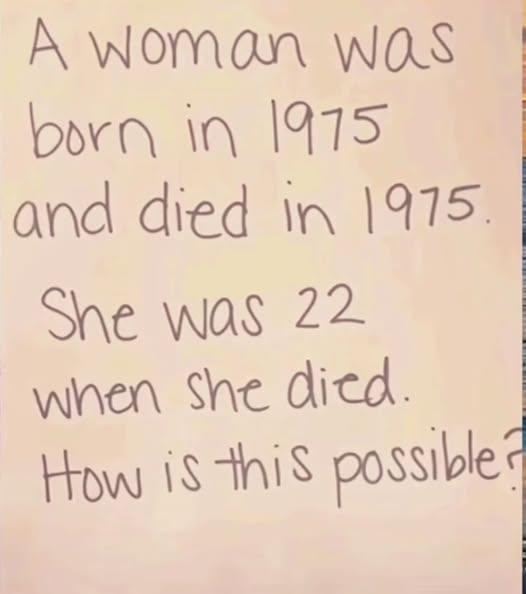Here’s a puzzling riddle: “A woman was born in 1975 and died in 1975. She was 22 years old when she died. How is that possible?” At first, it seems impossible since if someone is born and dies in the same year, they couldn’t be more than a year old. So how can she be 22?
The confusion comes from how we automatically think about numbers as calendar years. We assume “1975” means the year, and try to figure out how she could age 22 years in just one year. But that won’t make sense no matter how you twist it.
The real trick is that 1975 isn’t a year here. Instead, it’s something else—like a room number. Imagine the riddle is saying she was born in room 1975 and died in the same room at age 22. Now the math works perfectly, without any time paradox or trickery.
This kind of riddle plays with our brain’s habits. We automatically link numbers to dates, and that assumption hides the true meaning. Once you stop thinking about 1975 as a year and think of it as a room number or a label, everything clicks.
That’s what makes this riddle fun—it’s a clever switch that fools almost everyone at first. Try testing it on friends or family and see their reactions. It’s a great reminder that sometimes our biggest challenge is changing the way we think.
In life and riddles alike, questioning our assumptions can reveal simple answers to problems that initially seem impossible.


